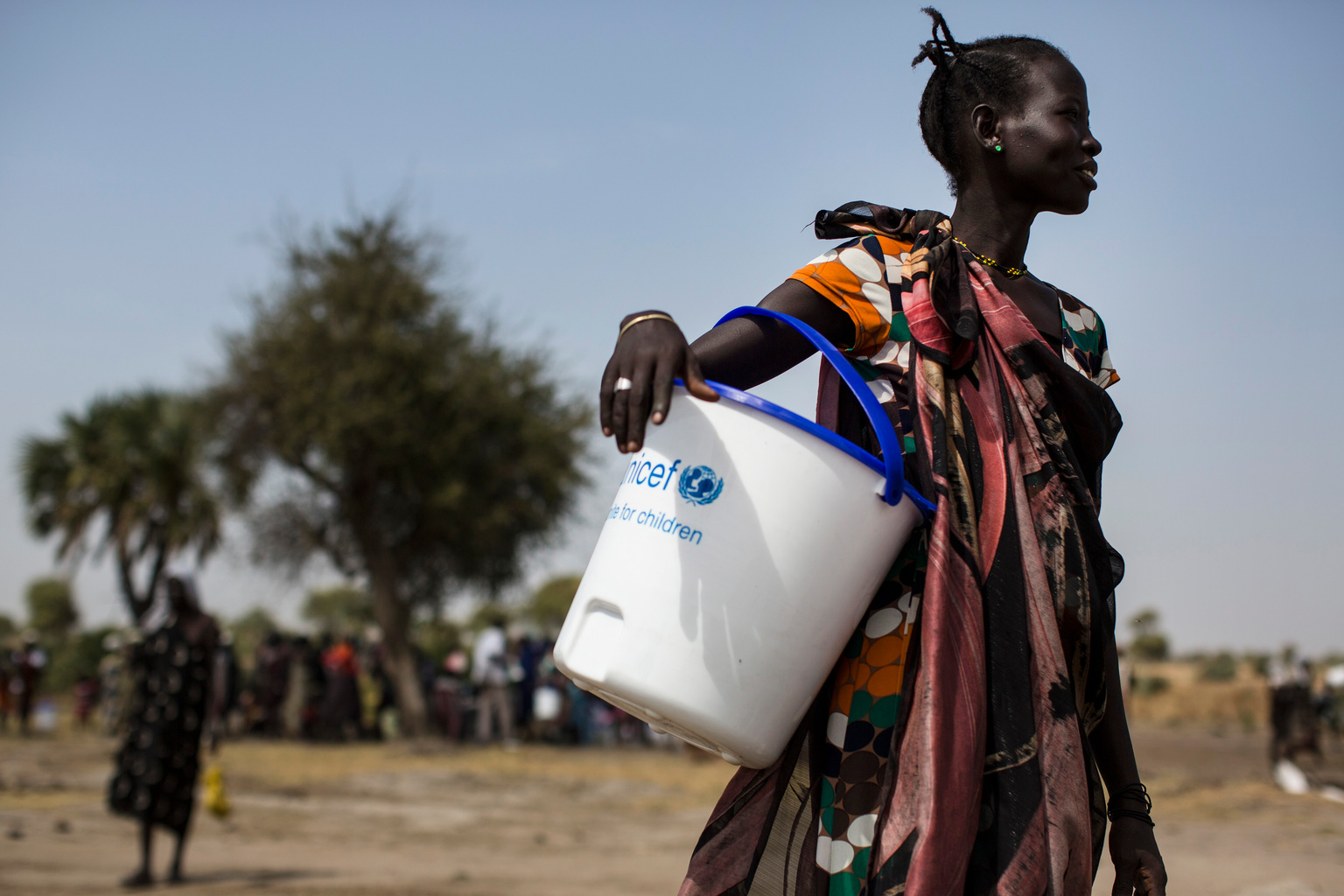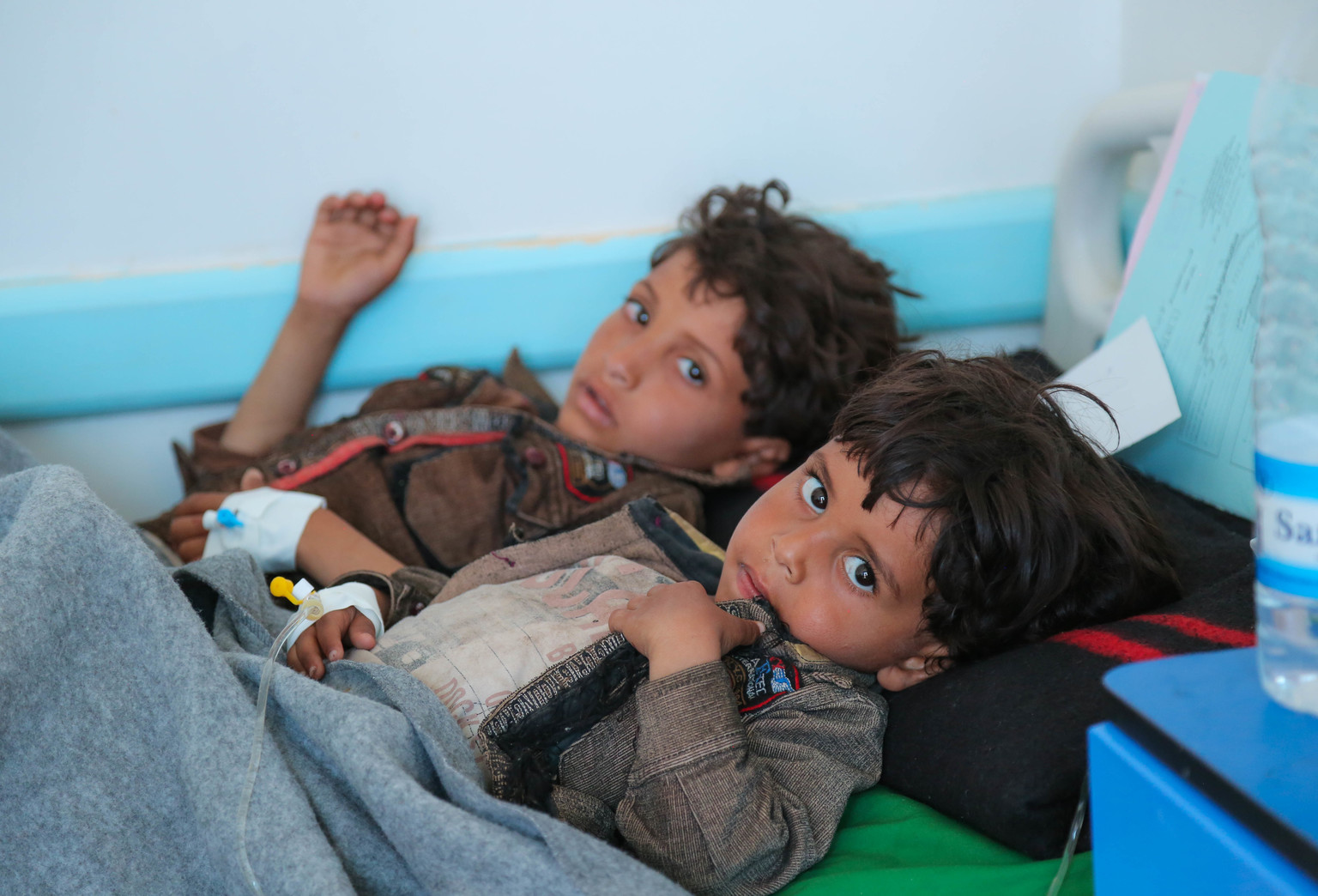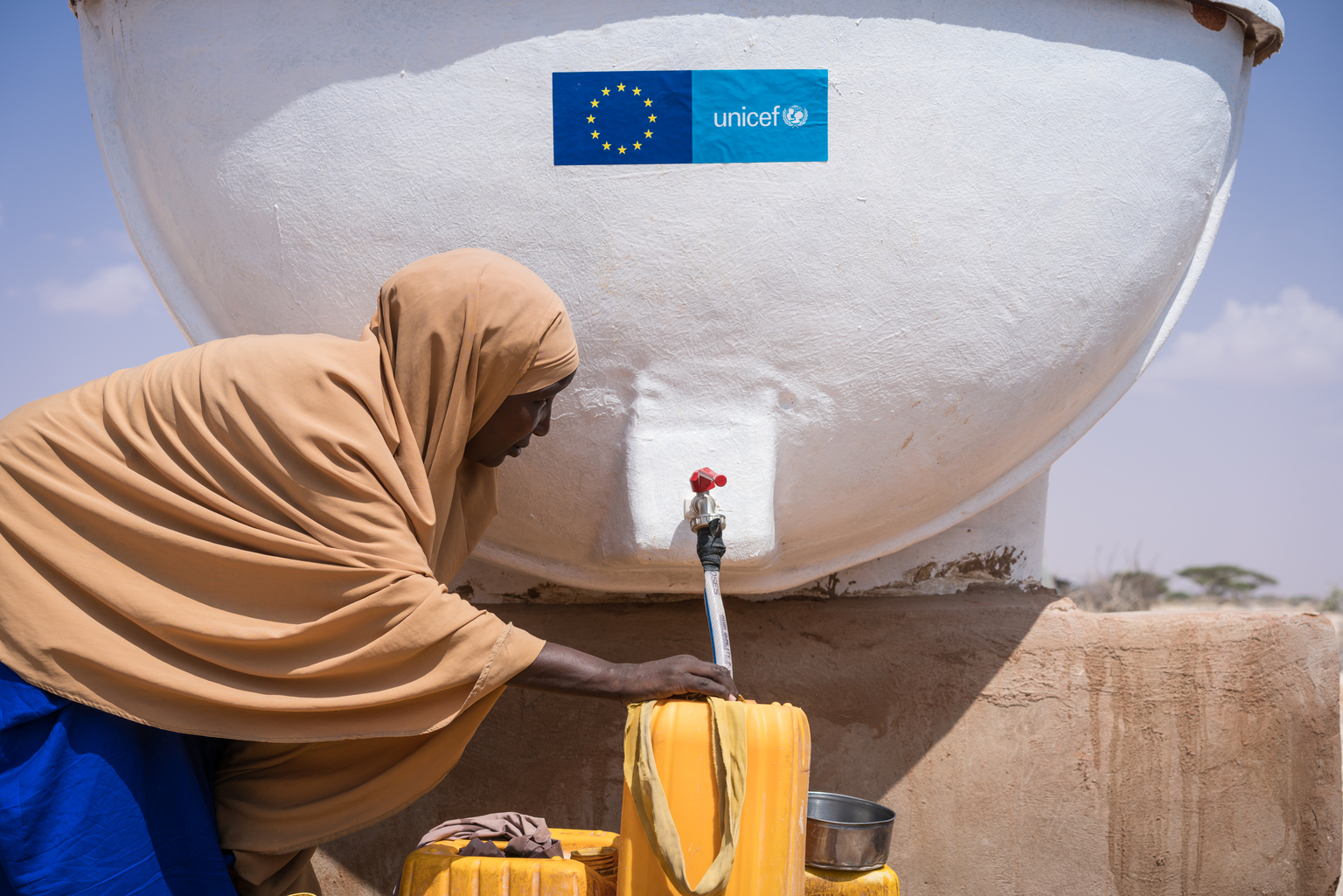水与饥荒──你要知道的4件事
2017-09-01
© UNICEF/UN055942/Gilbertson
冲突、旱灾、流离失所、疾病正引发大规模人道主义危机,导致也门、索马里、南苏丹、尼日利亚东北部2,000万人面临饥荒威胁,有近140万严重营养不良儿童面对死亡威胁。
严重旱灾对非洲之角造成巨大影响,饥荒危机正向周边国家蔓延。超过100万名南苏丹难民逃离冲突,乌干达人口急速增长,引致资源严重短缺。冲突、气候变化、环境退化、贫困等原因导致整个乍得湖盆地的居民流离失所。
饥荒让人联想到食物匮乏,但危机已逐渐发展,不仅包括粮食安全问题,还包括清洁食水、环境衞生设施、医疗保健等,特別是疾病防治问题。对于面对饥荒和粮食安全问题的儿童及家庭,水和环境衞生同样重要。当中有4个原因:

© UNICEF/UN053466/Modola
在南苏丹联合州卢布奎村的紧急应变计划中,妇女提着联合国儿童基金会捐赠的水桶。
1. 冲突
冲突是造成4个国家出现饥荒的共同原因,令供水和衞生设施受破坏或摧毁。也门激烈战争持续两年,导致城市供水系统损坏,各大城市的生命线几近崩溃。在尼日利亚东北部受冲突影响的地区,自冲突爆发以来,75%供水和环境衞生设施被毁坏。南苏丹战争持续超过三年,近半供水点被完全损毁。

© UNICEF/UN057031/Hatcher-Moore
在南苏丹朱巴郊区,17岁的阿迈尔推着手推车,放有一桶从水龙头提取而未经处理的食水。
2. 旱灾
气候变化、旱灾、洪水等极端气候造成水源枯竭或受污染,威胁整个社区赖以生存的食水质量和数量。在水资源极度匮乏的地区,各家各户要争夺短缺或不安全的水源,居民被迫逃离家园,感染疾病的风险也随之增加。索马里2016年爆发严重旱灾,导致人道主义危机迅速恶化,目前情况已蔓延到大部分地区。非洲之角其他国家也受到影响,特別是吉布提、埃塞俄比亚和肯尼亚。南苏丹季节性旱灾令人与动物之间的用水冲突加剧,导致原本短缺的水资源被过度利用。自1963年,由于气候变化和人口压力,西非乍得湖的水量已损失约90%,为该地区带来严重粮食安全问题。

© UNICEF/UN065871/Alzekri
儿童在也门首都萨那的撒比恩医院裏接受疑似霍乱个案的治疗。
3. 疾病和营养不良
不安全食水和被损毁的环境衞生设施可导致营养不良,或病情恶化。联合国儿童基金会(UNICEF)紧急援助项目主任曼纽尔‧丰泰内表示:「营养不良儿童无论摄取多少食物,只要还有食水安全问题,他们的状况就难以改善。」不安全食水会导致腹泻,令儿童无法获得生存所需营养,最终导致营养不良。营养不良儿童也更容易感染霍乱等水媒疾病。全球约有21亿人无法获得安全食水。

© UNICEF/UN057061/Abubakar
扎拉从位于尼日利亚迈杜古里巴卡西国的难民营为家裏取水。
4. 流离失所
当战争或旱灾迫使人们离开家园,儿童及家庭更容易被虐待和受健康问题威胁。流离失所儿童只能使用不安全的食水。缺乏厕所的临时营地成为疾病爆发热点,脆弱的儿童更容易感染疾病,在逃亡过程中,往往沒有医院和医疗中心。受饥荒影响4个国家中,共约830万人流离失所。

© UNICEF/UN061107/Knowles-Coursin
年轻女子在索马里加尔卡尤的国内难民营取水回家。
UNICEF如何提供援助
UNICEF正为受饥荒影响地区超过250万人提供安全食水,帮助他们对抗饥荒。
为保护儿童的生命,UNICEF采取的行动包括:每天向流离失所者营地运送数千升水;为医院和霍乱治疗中心提供支援;修復城市大型供水系统和衞生措施等。
- 自年初以来,UNICEF在也门进行一系列救援工作,超过500万人受惠,其中包括:供水网络和废水处理项目(例如为维持水处理和泵站运作提供燃料和电力供应)运营、水源氯处理、食水运输、分发个人衞生用品包等。
- 在南苏丹受霍乱影响的地区,UNICEF已挖出22个钻孔,超过21万人获得安全食水。全国约有20.7万人获得环境衞生设施,61万人获得安全食水。
- 在尼日利亚东北部受冲突影响地区,UNICEF与伙伴携手为约84.5万人提供安全食水。很多食水、环境及个人衞生(WASH)工作人员要冒生命危险为有需要帮助的人提供基本服务。
- 索马里有166万人获得临时安全食水,超过89万人获得个人衞生用品包,对预防疾病传播十分重要。









